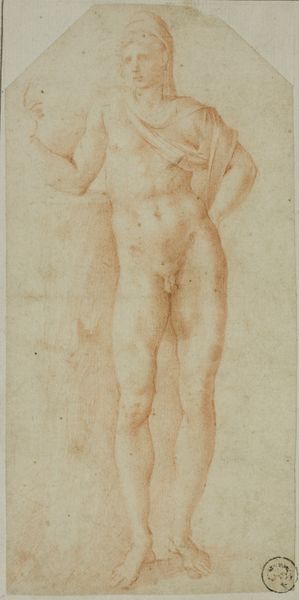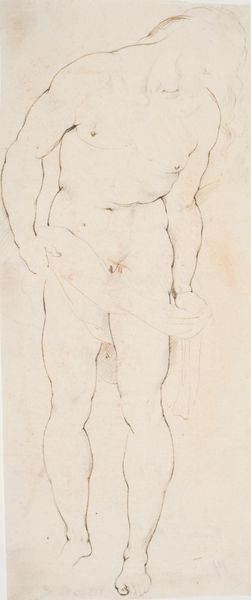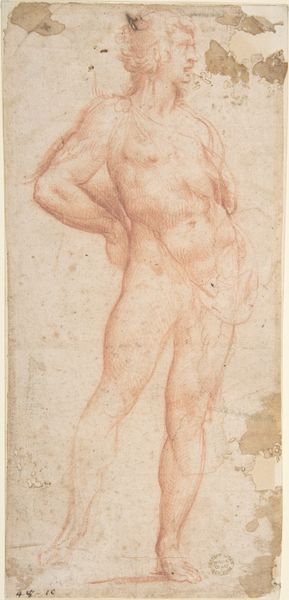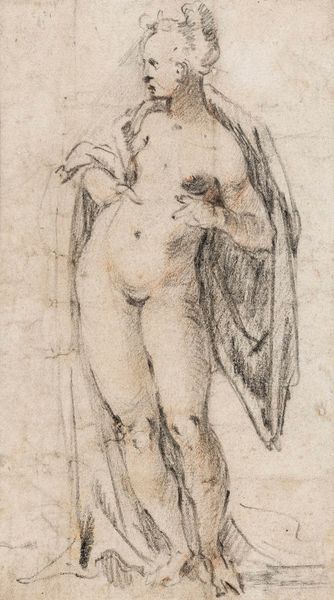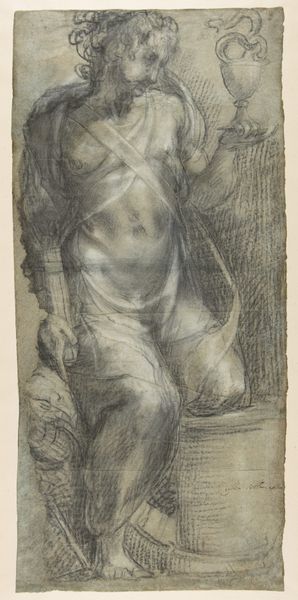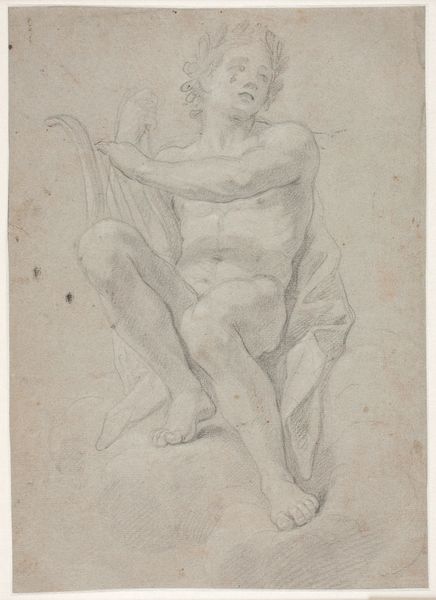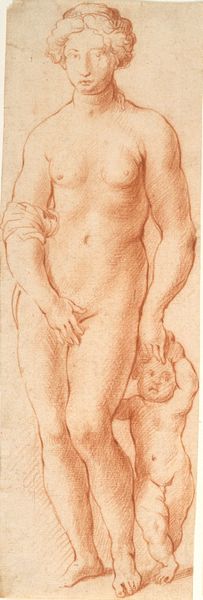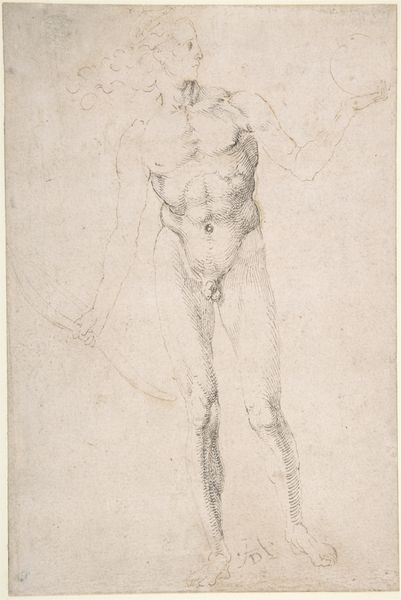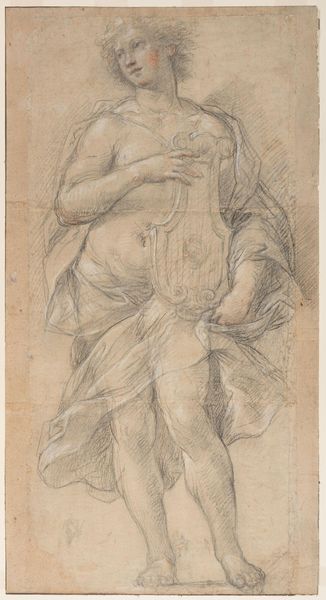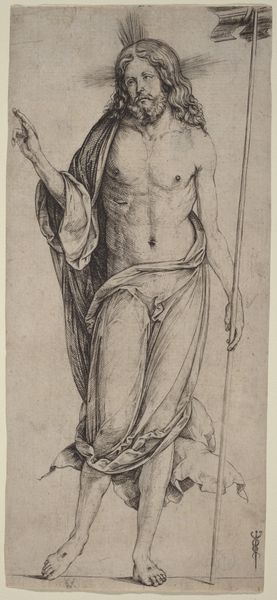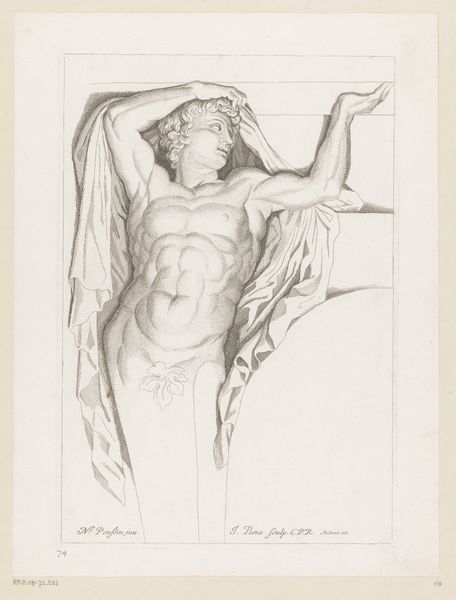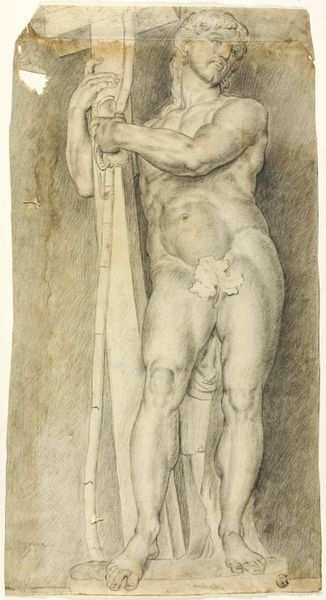
drawing
#
portrait
#
drawing
#
baroque
#
portrait drawing
#
academic-art
#
nude
Dimensions: 198 mm (height) x 88 mm (width) (bladmaal)
Editor: This drawing, attributed to Peter Paul Rubens and titled “Stående hermafrodit”, created sometime between 1577 and 1640, is quite intriguing. I'm fascinated by the materiality of this work. What was it like to produce this drawing and who was he making it for? Curator: Focusing on the process here, it’s crucial to understand the socio-economic context. Rubens was part of a highly structured workshop system. So, consider the labor involved – who prepared the paper? Who ground the pigments for the ink? This drawing was part of a larger production. How did these workshops challenge the distinction between art and craft, especially when catering to aristocratic patrons? Editor: That's an angle I hadn't considered! So, instead of thinking about individual artistic genius, we should consider it more as a collaborative manufacturing enterprise that served the elite. But does that cheapen the skill or inherent quality on display here? Curator: Not at all! But we need to consider Rubens within a network of production and consumption. Look at the precise lines; the skill in rendering light and shadow required training and apprenticeship. Think of the social status imbued in the access to materials and models in itself. And let's be honest, were works such as these used in other areas, in different ways than their aesthetic value. The labor, the material, the final form. How does this drawing reflect or challenge those expectations? Editor: I see what you mean. Viewing art in this material context expands our understanding. Instead of simply admiring, we’re actively engaging with its creation and social significance. Thanks for your thoughts, those are really interesting questions to explore! Curator: Absolutely. By analyzing art's materiality and modes of production, we expose power dynamics and question what we value. Food for thought, eh?
Comments
No comments
Be the first to comment and join the conversation on the ultimate creative platform.
